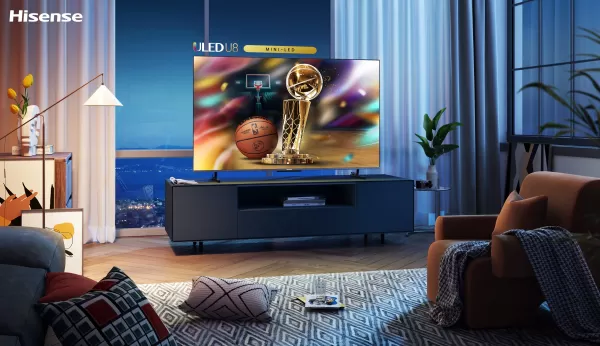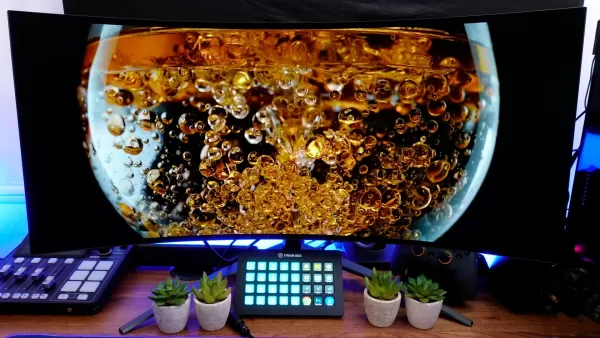I vividly remember purchasing my first OLED TV, the LG E8 55-inch, back in 2019, just before we all went into lockdown. It was the perfect companion for isolation. At the time, my understanding of OLED (organic light-emitting diode) was limited. I knew it featured self-lit pixels, unlike the backlit LCD displays, offering infinite contrast. But after immersing myself in the vibrant worlds of Final Fantasy XV and The Last of Us Part II, I truly grasped the magic of OLED. It felt like reliving a nostalgic fever dream in real-time. Naturally, I didn't stop at the E8.
A few years later, I upgraded to the LG C2 65-inch TV. Since then, I've reviewed numerous devices with OLED displays and discovered that not all OLED screens are the same. In fact, not all use the same technology. You might wonder, "How many types of OLED are there?" There are several, but you should focus on three: WOLED, QD-OLED, and AMOLED.
 WOLED, QD-OLED, and AMOLED: How They Work
WOLED, QD-OLED, and AMOLED: How They Work
OLED technology has been around for decades, with companies like Kodak and Mitsubishi experimenting with different approaches. It wasn't until LG introduced its OLED TVs in the early 2010s that the technology became mainstream.
LG's version of OLED is known as WOLED (White OLED). Although LG doesn't use this term in its marketing, preferring to position itself as the definitive OLED brand, WOLED is significant. OLED eliminates the need for a backlight, using self-lit pixels for infinite contrast and vivid colors. However, the compounds in red, green, and blue emitters degrade at different rates, accelerating the risk of burn-in.
WOLED addresses this by incorporating a pure white OLED layer with an RGBW color filter. Instead of individual red, green, or blue pixels, you have white pixels. Yet, this approach has its challenges. When light passes through color filters, some colors become brighter than others, leading to uneven brightness and reduced color volume. Higher-end WOLED models attempt to mitigate this with Micro Lens Array technology, which adds thousands of microlenses to each pixel to focus light more effectively.
In 2022, Samsung introduced QD-OLED (Quantum Dot OLED) as a new solution. QD-OLED replaces the white OLED layer with a blue one, which then interacts with a layer of quantum dot color convertors. Unlike the RGBW filter, quantum dots absorb light, converting blue into red or green without losing backlight intensity.
AMOLED stands in its own category, similar to WOLED but with a thin-film transistor (TFT) layer that controls pixel charge, allowing for faster pixel activation. However, this comes at the cost of OLED's iconic "infinite" contrast.
 WOLED, QD-OLED, and AMOLED: Which Is Better for Gaming?
WOLED, QD-OLED, and AMOLED: Which Is Better for Gaming?
Choosing the right OLED technology for gaming depends on your specific needs and preferences. If you're looking for a straightforward answer, QD-OLED is generally the best choice. However, there are scenarios where WOLED or AMOLED might be more suitable.
AMOLED displays are commonly found in smartphones and laptops, rarely in TVs due to their cost. They are flexible, suitable for various screen sizes, and offer high refresh rates and excellent viewing angles. Yet, they perform poorly in direct sunlight due to lower peak brightness.
For gaming monitors and TVs, the choice is between WOLED (often simply labeled as OLED) and QD-OLED. WOLED can achieve high brightness, but this is mainly for whites. The RGBW filter reduces brightness across other colors. QD-OLED, on the other hand, offers a brighter and more vibrant display overall because quantum dots absorb light rather than filter it.
I have my OLED TV in a bright living room, and despite the glare, the darkest parts still appear black. In contrast, my QD-OLED monitor on my desk shows a purplish tint under similar conditions. This is due to Samsung removing the polarizing layer from QD-OLED displays to increase brightness, which can lead to increased reflections.
While QD-OLED displays generally offer superior color and brightness, WOLED screens are less distracting in highly reflective environments. Remember, though, that display quality ultimately depends on specifications, and higher-end models will generally provide a better visual experience.
The future of OLED may soon see the introduction of PHOLED (Phosphorescent OLED). PHOLED uses phosphorescent materials to convert energy to light more efficiently than fluorescent materials. However, the blue in PHOLED has a much shorter lifespan, which has historically been a major drawback.
Recently, LG announced a breakthrough in blue PHOLED technology, overcoming this challenge and preparing for mass production. LG calls PHOLED "Dream OLED" because it offers 100% luminous efficiency, far surpassing the 25% efficiency of fluorescence. This means PHOLED TVs will be brighter and more energy-efficient.
Although we won't see PHOLED in TVs immediately, we can expect to see this technology in smartphones and tablets in the near future.
 Home
Home  Navigation
Navigation






 Latest Articles
Latest Articles









 Latest Games
Latest Games




![Chubby Story [v1.4.2] (Localizations)](https://imgs.xddxz.com/uploads/85/1719638042667f981a5e9f8.jpg)

![Zia – New Version 0.4 [Studio Zia]](https://imgs.xddxz.com/uploads/47/1719569268667e8b74e6004.jpg)




